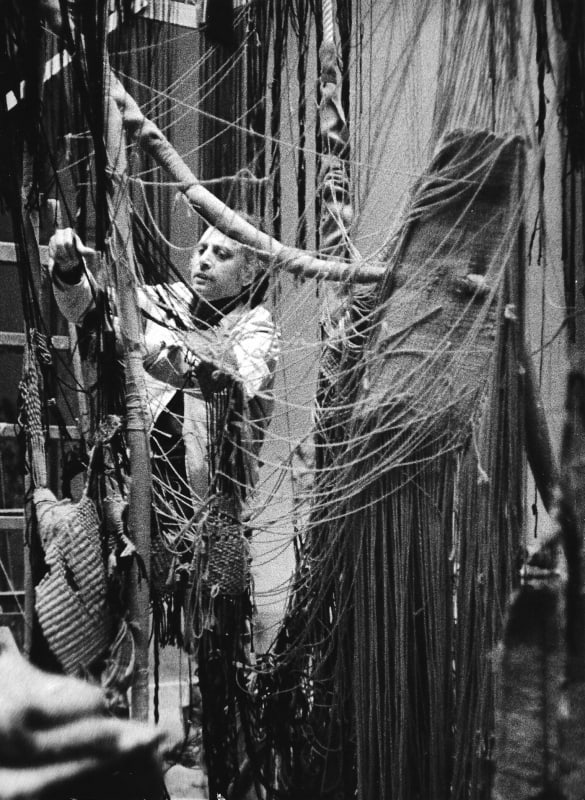Centre Grau-Garriga d’Art Tèxtil Contemporani, Sant Cugat del Vallès, Barcelona, Spain
Josep Grau-Garriga (1929-2011) developed artistic practices inspired by textile techniques from the 1950s onwards. He soon became an international benchmark for the most experimental approach to creative tapestry. In the early 1970s, his textile processes and techniques underwent a shift. At that time, a range of artistic, educational, community, and social objectives were added. This meant that the creation of autonomous pieces gave way to the practice of so-called environaments (adaptation of the term environment into Catalan), whose performance involved a large number of actors and a site-specific condition.
The inventory of all the environaments produced by Grau-Garriga between 1970 and 2004 includes some sixty cases. Many of these ephemeral interventions were carried out in Europe and the United States, and, in some specific cases, Latin America and Africa. The term environament referred to a practice situated in natural or historical settings, either typical of the art world or sometimes completely foreign to it, with motivations of protest, denunciation, or exaltation. The environaments could be linked to the celebration of a happening or ceremony. They were often ephemeral and therefore underwent processes of dismantling and destruction. Those made with textile fibers might seem large tapestries or soft sculptures that had transformed the architecture of the place into a loom. Hence, many took on an epic character.
From the earliest environaments, Grau-Garriga promoted significant changes in the division of creative labor. The proposals for seminars, workshops, or group creative experiences invited participants to get involved in the making of large installations. Their pedagogical nature transformed collaborators into authors. Creativity ceased to be strictly individual and became a collective endeavor. This is how the environaments became examples of community action that aspired not only to intervene in the physical environment or landscape, but also in the narratives of those places linked to historical events. This also made them controversial. Despite their celebratory and lively nature, they sometimes sparked negative reactions.
The dialogical intensity that accompanied them, both at the time of their creation and during their reception, made them objects of an unusual artistic category. The proof is that art institutions have devoted little effort to preserve the memory of the environaments. In order to recover them, it has been necessary to create an archive containing visual documents, the voices of the participants, and material remains or projects. In this sense, they join the tradition of Christo and Jeanne-Claude's wrapped landscapes, Gordon Matta-Clark's cuts in buildings about to be demolished, and the utopian cities imagined by Constant, works that we will never see again except through the documentary evidence that has survived.

